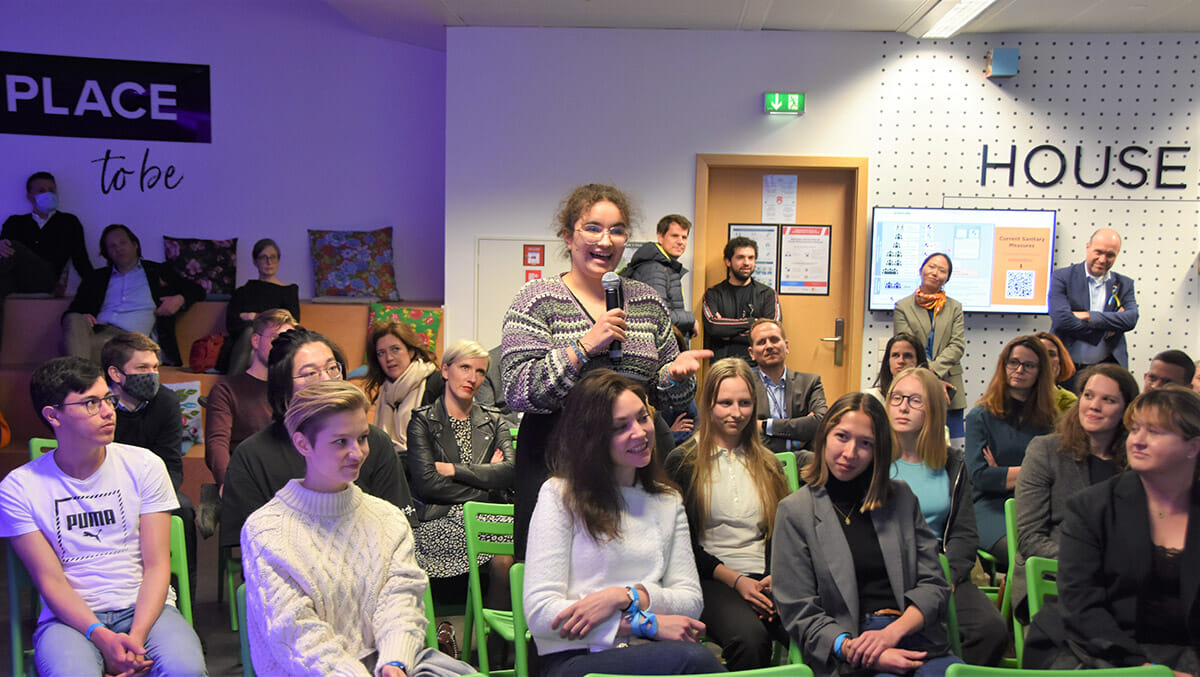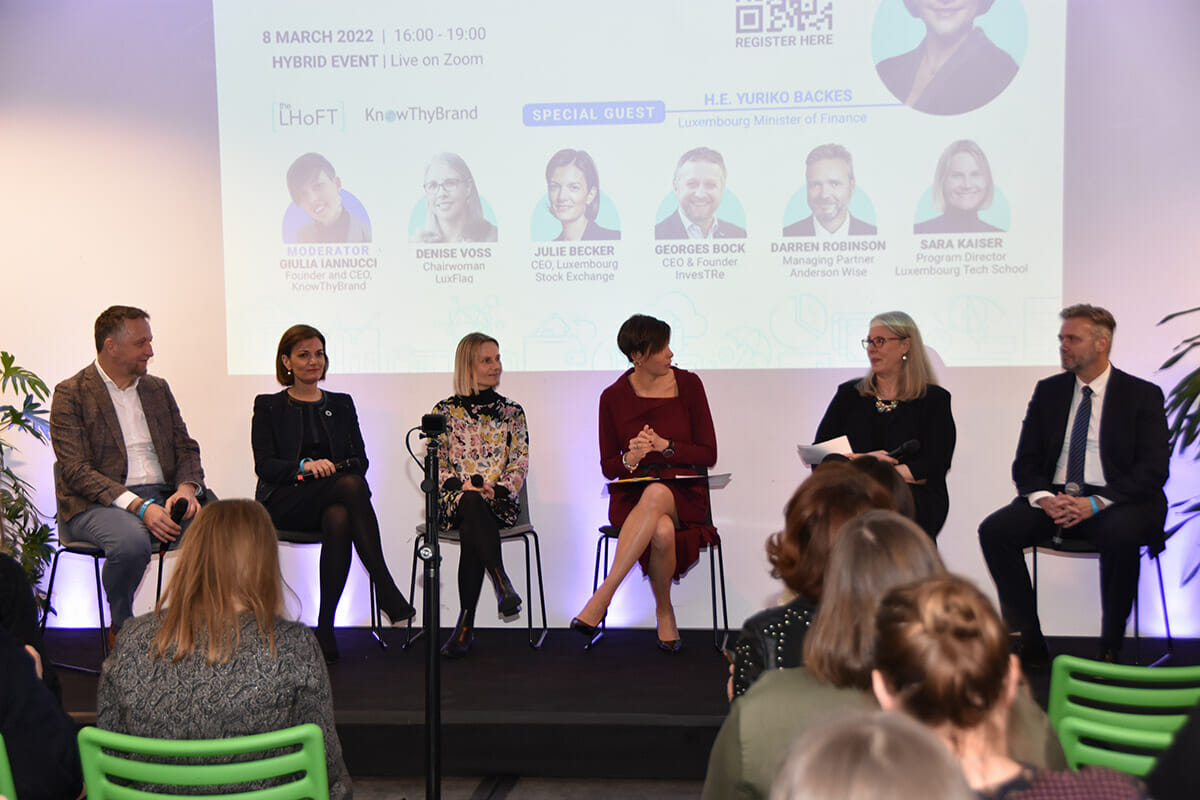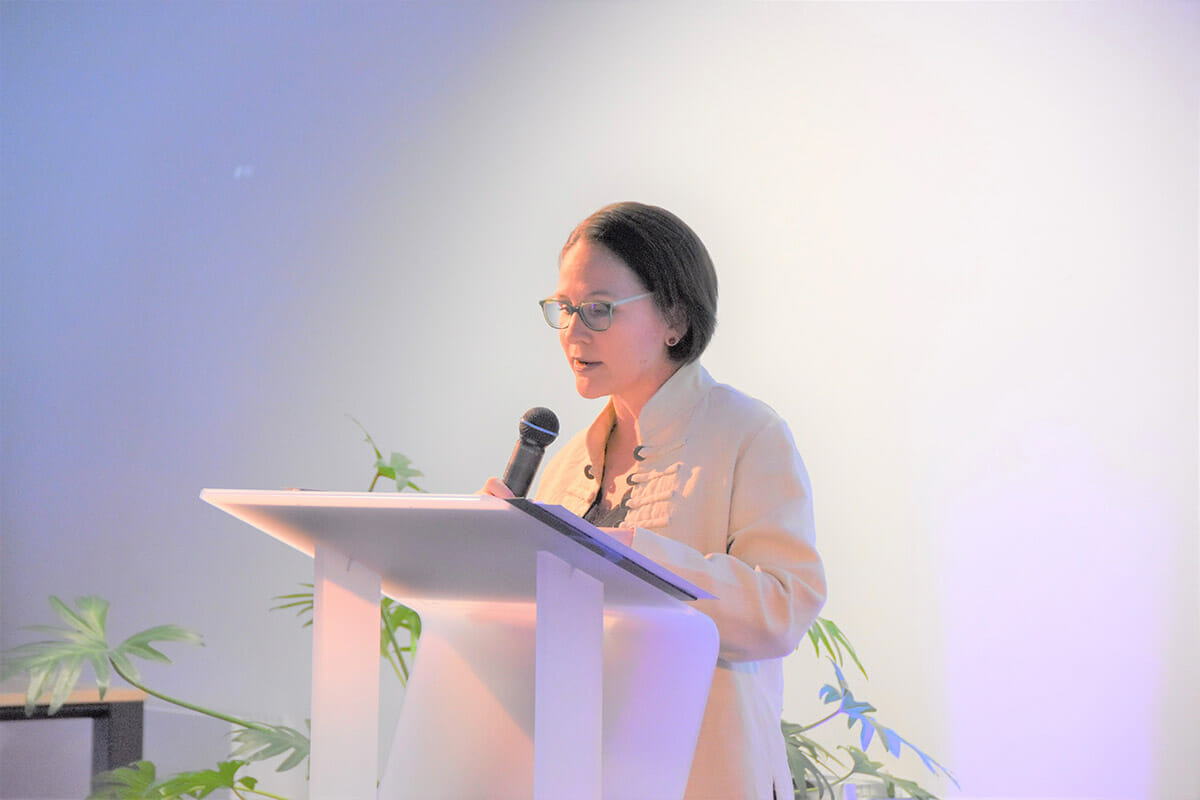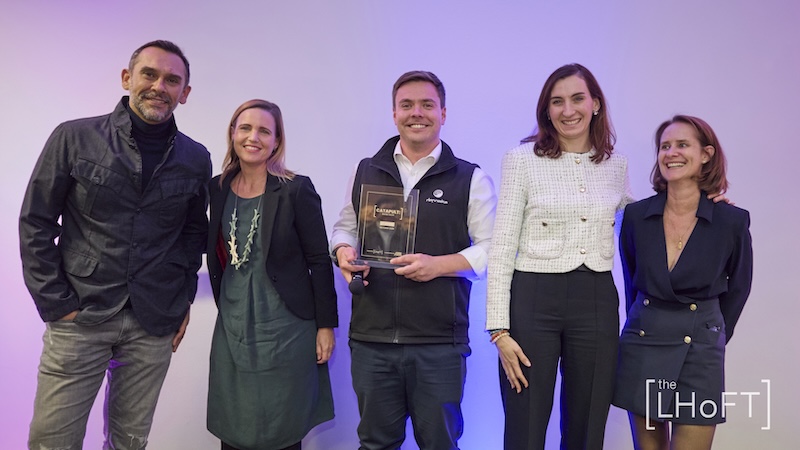Challenges and Opportunities
“Our ambition cannot be that we have the most educated housewives in Europe. The reality today is that women remain an untapped potential for our economies. And this is certainly also true for Luxembourg’s financial centre and its Fintech ecosystem”, shared H.E. Yuriko Backes, Luxembourg Minister of Finance, to an audience full of women and men at The Power of Gender Inclusion event on International Women’s Day2022.
As part of our Gender Inclusion series, in partnership with KnowThyBrand, we will continue to discuss challenges women face entering and striving in the workforce and what can be done to support them. To gain a better understanding of these challenges, read our first blog “The Power of Gender Inclusion: Championing Women in Finance and Technology in Luxembourg” in the series that provides an overview of biases and shares the benefits of fostering change.
Looking back on the 8th of March event, we captured some of the main inputs and takeaways.
The session started with Giulia Iannucci, Founder and CEO of KnowThyBrand and host of the event sharing some important statistics: we live in a society where there are more S&P 500 CEOs named James or Michael than women chief executives, according to a report by Equileap.
Additionally, in 2020 only 20% of executive roles in financial enterprises were held by women and a mere 7% of tech jobs were occupied by women that same year. We need to ask ourselves, ‘how is that possible?’ and ‘what can we do about it?’ which is exactly what the presenters and panelists discussed at the event.
Four core themes emerged from the conversations:
- education
- role models,
- the concept of the “broken rung”,
- and economic and social benefits of gender inclusion.
So, let’s start from the beginning.

Taking The Leap to Get Educated
There are two fundamental reasons why fewer girls and women pursue education in STEM related fields. First, lack of role models and second lack of support from family, friends, and society as a whole.
Julie Pompignoli, a previous student of the Luxembourg Tech School, shared that after participating in the program, she was asked by acquaintances “what is a girl like you doing in a tech school, you cannot tell me you’re learning to code.” Clearly, there is an inherent stereotype of what girls and boys should do. Luckily, she did not listen to her critics as she is pursuing a degree in medicine and becoming a role model for other girls who want to do the same.
To prove this point even further, a non-profit organization called Inspiring the Future launched a viral campaign called Redraw the Balance to expose these kinds of stereotypes for young girls and boys. They conducted an experiment whereby 66 children were asked to draw a picture of a firefighter, a surgeon, and a fighter pilot. The result, 61 children drew men and only 5 drew women. The study shared that “gender biases are defined between the ages of 5 and 7” and so role models (especially at a young age) are crucial to redraw the balance. Children need to continuously see female leaders so that the next generation can truly believe anything is possible. This is supported by Sara Kaiser, Program Director at the Luxembourg Tech School, who mentioned how half the coaches at the school are female and the positive impact that this has on young students. Sara also explained that in order to disprove the stereotype “we need to create a social environment that makes it comfortable for girls” to learn otherwise the cycle of lack of role models will continue leading to fewer women in STEM.
Jana Hrivnakova Wagner, Team Manager at Kids Life Skills also solidifies the findings of this study. She mentioned that “older girls are less likely to participate in our activities” and the reason being is the lack of inspiring leaders to teach them – only 2 of their instructors are women. Again, having strong female role models is key. She also shared that participation would grow not only through female role models but also support from parents. Jana told a story of when a mother saw all the robots on the floor at one of their open houses, the mother said this is not for girls, this is too much technology. To help us shape the future for our kids, Jana asked the audience to help “change the mindset of parents.”
Female Role Models Equate to Positive Outcomes
An article by the Psychology Press indicates that increasing the number of women in science is faced by the challenge of both retaining and recruiting female role models. Apparently, “taking a calculus course with a female professor enhanced women’s implicit math self-concept and improved their implicit attitudes toward math compared to taking a calculus course with a male professor.” Therefore, retaining female role models is crucial to the success of women. The article also suggests that retaining female role models is more difficult than recruiting as both men and women can be equally successful at recruiting female role models. On one hand it’s great as it shows both men and women can work together to encourage more women to join STEM fields, on the other hand, it implies that we need to continue to find new ways to retain women in all fields but especially STEM.
An additional study mentioned in the article ‘Girls in STEM: Is it a Female Role-Model Thing?’ reports on how “STEM role models can serve as “social vaccines” that protect the self-concept of women in STEM against stereotypes.” Both articles showcase facts and figures proving that having female role models increase output and create a sense of belonging for women.
Denise Voss, Chairwoman of the LuxFlag shared a TED Talk by Reshma Saujani and explained that “boys are raised to be brave while girls are raised to be perfect and so are missing out on opportunities.” Similarly, Julie Becker, CEO of the Luxembourg Stock Exchange spoke about the strength of diversity – “at the end of the day, women are different and should remain different.”
What they are trying to say is that we should continue to encourage our differences rather than chastise girls and women for having them, plainly put, let’s not raise girls to be perfect. These differences will continue to drive diversity and inclusion and model opportunities for women from all ethnic backgrounds and cultures.
All the challenges we have discussed can more easily be achieved through support from one’s community, representation of women in leadership roles and better storytelling within the media – sharing the triumphs of women and showcasing them in powerful roles within various programming.

The Broken Rung
Next, the “broken rung” speaks to the issue of women in entry level positions losing out on promotions to their first managerial positions. Lack of women growing into managerial positions reduces the chances of other women reaching a C-suite role such as CEO, COO or CTO. The 2021 Trust Radius Women in Tech Report found that “nearly 2 in 5 women felt that their gender was a barrier to being considered for their next promotion.”
Darren Robinson, Managing Partner at Anderson Wise let us know that as a head-hunter in 2006 in Luxembourg he only received requests to source male candidates for leadership positions. Fast forward to today, this has thankfully changed. He is always looking for a balanced pool of candidates but told the crowd that “we need more women to put their hand up and apply to opportunities even if [they] feel like [they] don’t meet all the criteria.” Getting more women to apply to a job is crucial and luckily recruiting is moving that way too – widening the candidate pool. But it is also a responsibility of the employers to understand that women are less likely to apply for jobs and promotions and that they took the time to truly find the right candidate. According to the LinkedIn Gender Insights Report, women apply to 20% fewer jobs than men, however they are 18% more likely than men to get hired to senior roles after applying. A confidence gap exists which can be attributed to many things including role models as previously discussed.
Julie Becker was able to avoid the broken rung but perhaps she is a unicorn in that sense. She told us “I think we need quotas if we want things to change. When women are in management level, they are often replaced by men, therefore there is no continuity or sustainability.” And this is slowly happening, Reuters reported on March 14, 2022 the “European Union states have given initial approval to pushing firms to appoint women to at least 40% of non-executive director roles or 33% of all board jobs by 2027.” This law has been stalled for a decade which speaks volumes on how far we still need to go.

Socioeconomic Benefits and Incentives to Gender Inclusion
Having women in leadership positions benefits everyone.
Julie Becker spoke about the strength of diversity – “at the end of the day, women are different and should remain different.” We should continue to encourage our differences rather than chastise them as it is no longer just a tale that diversity makes business sense.
According to Georges Bock, CEO and Founder of Investre“ supporting gender equality and diversity is more about changing the state of mind than anything else” and it begins with the education process…
Perhaps the lack of education individuals have about women, both from a social and economic standpoint, is one of the main problems. According to UN Women, “increasing the female employment rates in OECD countries to match that of Sweden could boost GDP by over USD 6 trillion. Conversely, it is estimated that gender gaps cost the economy some 15% of GDP.”

When women “disproportionately sacrifice their careers, this penalises them in their life. It will produce a pension gap, it will make them dependent rather than independent, but it also squanders opportunities for societies and economies as a whole,” according to H.E. Yuriko Backes, Luxembourg Minister of Finance.
This is also why the UN mantra for International Women’s Day 2022 is “gender equality today for a sustainable tomorrow, recognizing the contribution of women and girls around the world, who are leading the charge on climate change adaptation, mitigation, and response, to build a more sustainable future for all.”
Finally, both Julie Becker and Georges Bock agreed that there is a need for women to be actively involved in Tech and Finance, because it is only in this way that new products and services can be designed around the real needs of women across the world.
As an example, The IFC in partnership with UN Women and the International Capital Market Association, developed “Bonds to Bridge the Gender Gap” which are described in this report.

Taking the Next Step
Whether big or small, taking action is crucial in moving the needle forward. We have shared a few thoughts of the next steps you can take.
- Encourage women to apply for positions they may not feel ready for.
- Support your daughters, granddaughters, nieces, to join programs and pursue education in STEM related fields.
- Talk to your son, grandson, nephew, friend about the gender gap so they are aware of biases.
- Support women in finding mentors both male and female.
- Further educate yourself on the benefits of gender inclusion.
- Invest in financial instruments that work to reduce the gender gap.
- Lobby your governments to create better legislation supporting women.
- Talk to people around you about how you are feeling and what you are seeing tied to stereotypes and gender biases.
Nasir Zubari, CEO of the LHoFT, puts it simply “I want diversity because it makes my business better.” And the only way to do this is to “strive for a world free of gender bias, stereotypes and discrimination, this is the basics,” says H.E. Yuriko Backes, Luxembourg Minister of Finance.
Let’s work on achieving these basics together. So, as part of our ongoing campaign of Championing Women in Finance and Technology in Luxembourg in partnership with KnowThyBrand, a focus group was organized on the 21st of April with the purpose of listening to the next generation. We want to inspire them, but we need to listen to them if we want to constructively help them.
We will keep you posted about the next event but in the meantime continue to inform yourself about how to tackle gender inequality and support female entrepreneurs and women in business by tuning in to the KnowThyBrand podcast:
Photos Copyright: MinFin
The Author
 Darya Niknamian is a freelance writer and advocate of gender equality. For the last 10 years she has worked in the female empowerment space in North America, Asia and Europe. Her initiatives have provided hundreds of women with the tools and resources to take on leadership positions, found companies and ask for fairer salaries and working opportunities.
Darya Niknamian is a freelance writer and advocate of gender equality. For the last 10 years she has worked in the female empowerment space in North America, Asia and Europe. Her initiatives have provided hundreds of women with the tools and resources to take on leadership positions, found companies and ask for fairer salaries and working opportunities.






